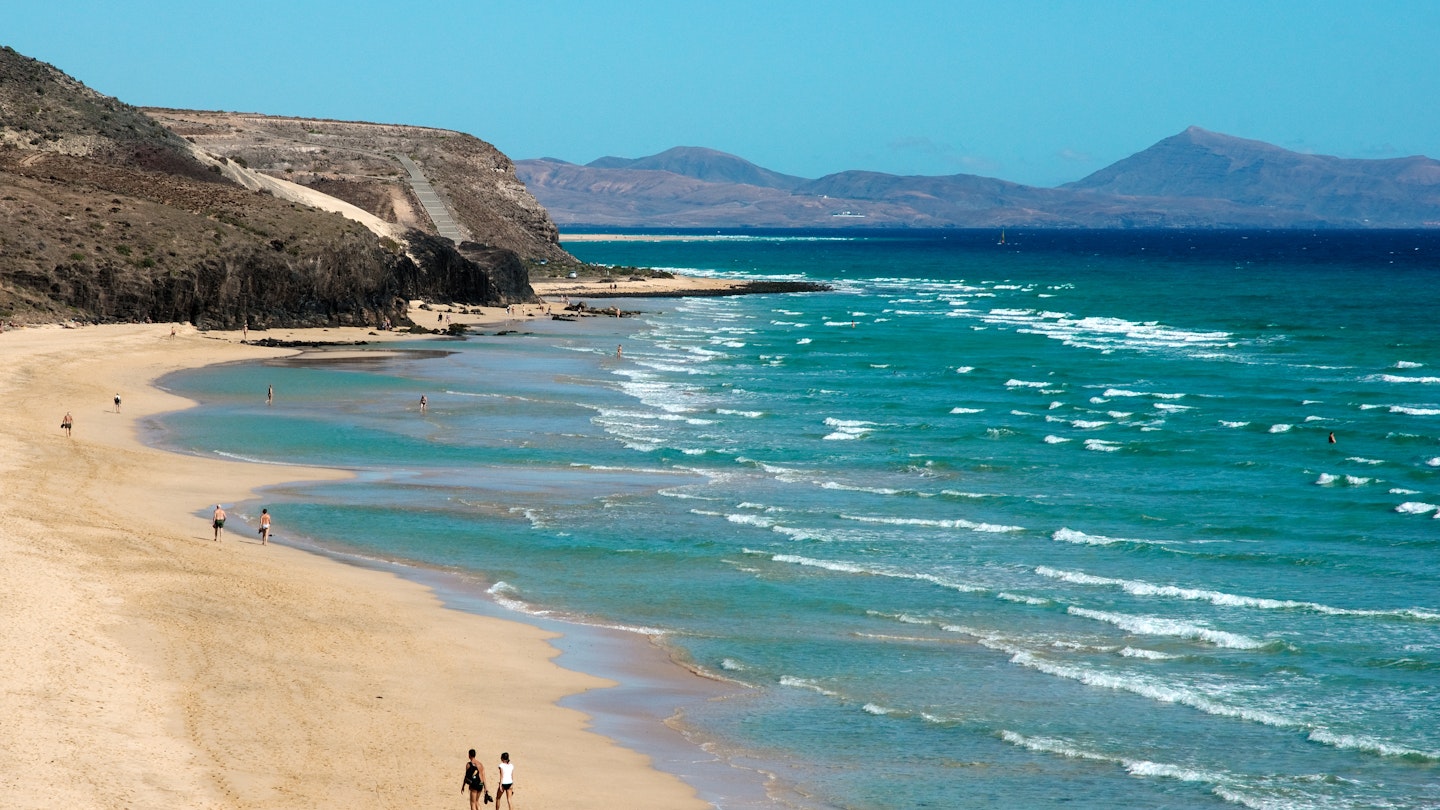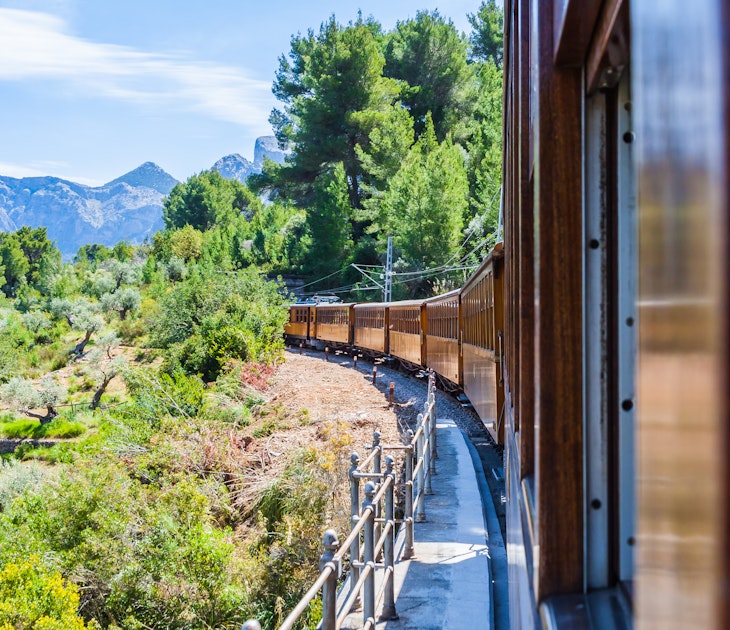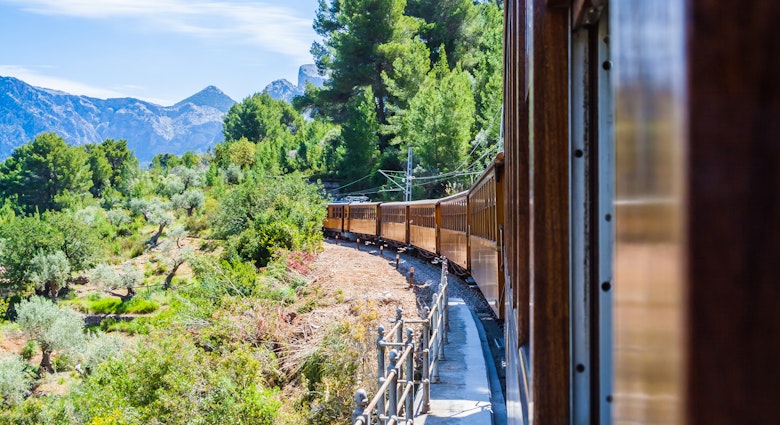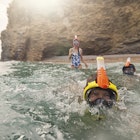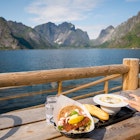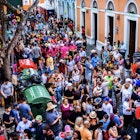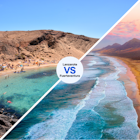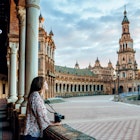Eerily beautiful lava-sculpted mountains, rippling sugar-white and bare black-rock beaches, distant villages teetering atop ridges, tumbling pine forests full of churning mists and exhilarating hikes, and plenty of sun-toasted resorts – Spain’s far-flung Canary Islands are deservedly one of Europe’s most popular destinations.
Many travelers become so enamoured with the Canary Islands that they return year after year, often exploring a different island every trip. But where to start? While the eight Canary Islands make up the archipelago west of Morocco’s Atlantic coast, each island has its own distinct charm, character and appeal. No matter your travel style, here’s a guide to finding the Canary Island that's best for you.
Parts of Spain now require a health pass from visitors to enter indoor spaces

Tenerife
Best island for mountains, hiking and food
Beyond the British-geared tourist resorts sprinkled across the island’s south, Spain’s formidable tallest peak – snow-dusted 12,523ft-high El Teide – puts age-old favorite Tenerife on almost every las Canarias itinerary. Combined with the surreal Unesco-listed 73-sq-mile Parque Nacional del Teide, this impossibly spectacular volcanic moonscape serves up some of the most exciting hiking in all of Spain. Only 200 walkers a day can tackle the five-hour ascent to the summit: book ahead online. Across the island, other jaw-droppingly beautiful walks lead past charismatic villages, through perfumed Canarian pine woods or down plunging valleys such as the 4-mile (6.5km) Barranco del Infierno.
And then there’s the blossoming, ever-more sophisticated local food scene. Tenerife is the only Canary island blessed with Michelin stars – six at last count, with temples to haute cuisine running from Martín Berasategui’s two-star, Basque-inspired M.B to the Padrón brothers’ seafood sensation El Rincón de Juan Carlos.
Where to stay on Tenerife
Finding a room is generally not a problem in Santa Cruz and in the north of the island (apart from at Carnaval time), but the same cannot be said for the southern resorts, particularly around Los Cristianos and Playa de las Américas; book in advance when possible. Hotel Alhambra in La Orotava sleeps guests in an art-packed 18th-century manor.
Where to eat on Tenerife
Visitors can ditch the resort buffets in favor of more appealing and imaginative dishes, ranging from traditional Canarian cuisine, typified by robust homestyle cooking, right through to the tantalizing haute cuisine of gastro temples, where innovative chefs serve some fabulously novel fusion combinations. Tenerife's capital city of Santa Cruz de Tenerife hosts an array of outstanding restaurants. Try Guannabi for creatively executed Mediterranean-fusion dishes in a delightfully converted Canarian house.
How to get to Tenerife
Two airports serve Tenerife: Tenerife Sur Airport handles international flights, while almost all inter-island flights (plus a few international and mainland services) use the older and smaller Tenerife Norte Airport. Ferries also travel to Tenerife from the other Canary islands, but flying is the fastest way to travel between the islands, and prices are very competitive.

Gran Canaria
Best island for mountains, history and food
The most populous among the islands, often-maligned Gran Canaria proves as inspiringly diverse as the Canaries’ deliciously varied cuisine. Swirls of mist-cloaked mountains give way to desert-like fields and lush laurel and pine forests (and, yes, a few packed-out tourist resorts), while intriguing pre-Hispanic sights like Gáldar’s Cueva Pintada conjure a picture of the archipelago’s original inhabitants, the Guanches. Explore further on a twists-and-turns road trip through the island’s high-altitude center, whose beauty and drama peak at top-of-the-world cave-village Artenara, before stocking up on creamy queso de flor (flower cheese) and other local goodies at a farmers’ market. Soak up the distinctive Canarian architecture in soulful capital of Las Palmas de Gran Canaria, Spain’s ninth-largest city.
Where to stay on Gran Canaria
Gran Canaria arguably has the best range of accommodations in the Canaries, depending on whether you want to wake up to sounds of birdsong, the surf or surrounded by the vigor and excitement of a Spanish-mainland-style city. The bright, colorful and welcoming La Ventana Azul hostel is spectacularly located right on the beachfront and has a rooftop terrace and free snorkel rental.
Where to eat on Gran Canaria
The breathtaking topographic disparities and climatic variations, including contrasting humid trade winds and dry desert-air currents, all help to generate a diverse patchwork of agricultural produce. Along with the aquacultural goods on offer, Gran Canaria's pantry is rich and bountiful. Add to that the farmers' markets and fish markets and you will discover a tempting abundance of food choice. You'll find outstanding "eco-fusion" cuisine at Llévame al Huerto.
How to get to Gran Canaria
Gran Canaria Airport has direct flights to destinations throughout Europe, as well as all of the Canary Islands. Two passenger harbors on Gran Canaria offer inter-island ferries.
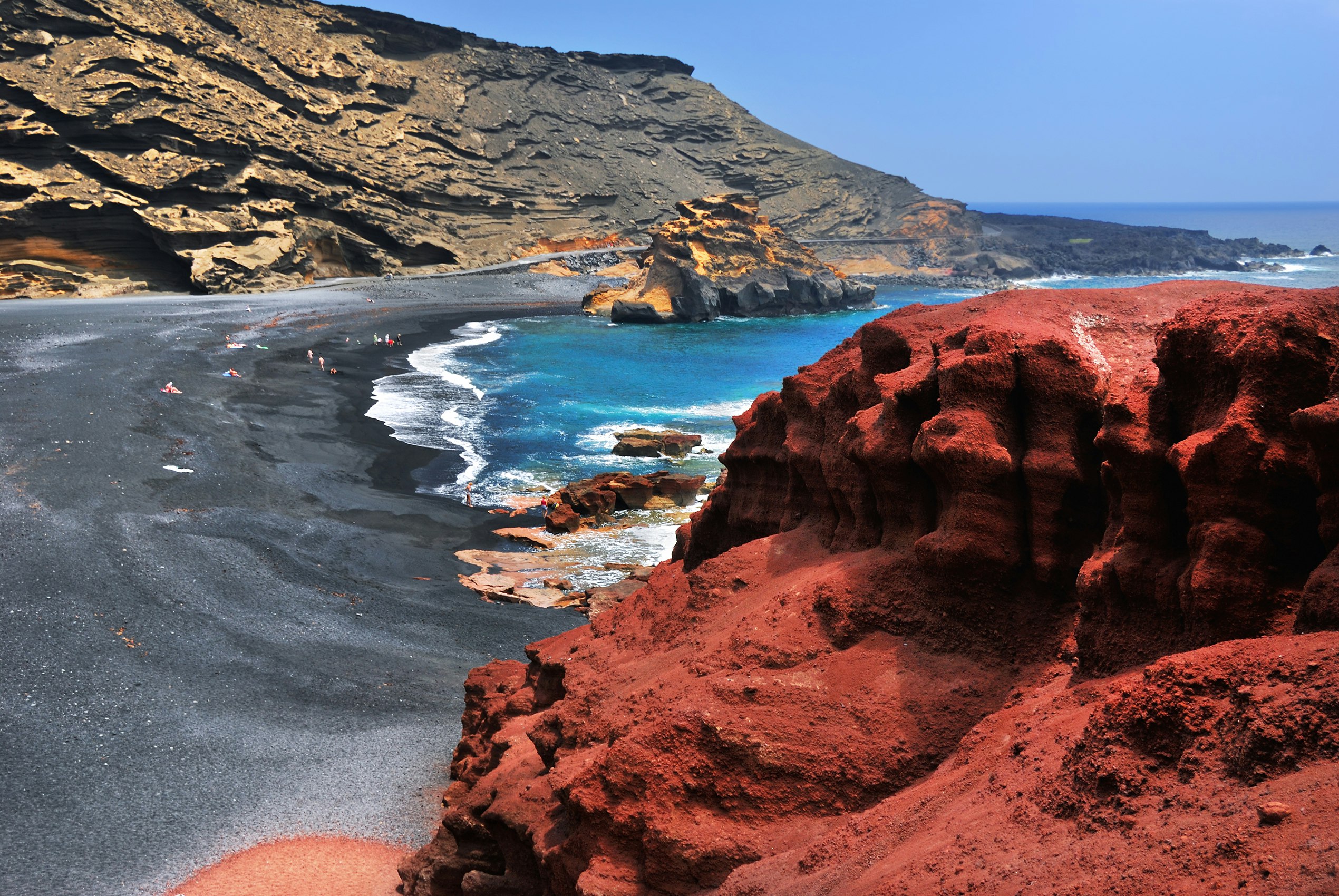
Lanzarote
Best island for landscapes, art and architecture
An entrancing world of brooding volcanic cones, glinting black-pebble beaches, thundering Atlantic surf and the odd palm-spangled valley, Lanzarote feels like a giant color-shifting natural canvas. So it’s no surprise that the island is tightly tied to 20th-century artist and environmental campaigner César Manrique, whose impossible-to-miss influence you’ll uncover around every corner – from the whitewashed, sky-blue-windowed homes of mellow coastal villages like La Caleta de Famara, Arrieta and El Golfo to the inimitable lava-field house at the Fundación César Manrique. At the heart of it all lies the 20-sq-mile Parque Nacional de Timanfaya. Savor this otherworldly volcanic landscape by scrambling up the sprawling Caldera Blanca on a 5.5-mile (9km) hike at the park’s edge.
Where to stay on Lanzarote
Much of Lanzarote’s accommodations are in self-catering apartments, private villas and sprawling resorts, which you'll find in Puerto del Carmen, Costa Teguise and Playa Blanca. That said, there's a growing number of wonderful independent hotels dotted around, especially in the island's wine-growing region and northern reaches – and places like these play a key role in giving travelers an insight into the fascinating Lanzarote that lies beyond its beach resorts. Artfully reimagined bodega Buenavista Lanzarote offers five eco-conscious "country suites" amid volcanic vineyards.
Where to eat on Lanzarote
Canarian cuisine stands strong on Lanzarote, but with its own delicious twists, including local goat's cheese, roasted meats and three styles of the much-loved mojo (spicy sauce made from coriander, basil or red chili peppers). There are wonderful restaurants all over the island (both local-style and creatively international), with the best food found well beyond the resorts. Canarian-international La Cantina is a beloved dining spot in delightful Teguise.
How to get to Lanzarote
Aeropuerto César Manrique–Lanzarote has an array of flights to and from Europe, as well as Gran Canaria, Tenerife and La Palma. Other Canary islands are accessible with stopovers in Gran Canaria and Tenerife. From Arrecife's Puerto de los Mármoles, ferries connect with Gran Canaria and on to Tenerife and La Palma. From Playa Blanca, there are regular ferries to Corralejo on Fuerteventura.

Fuerteventura
Best island for beaches and water sports
A Unesco Biosphere Reserve since 2009, the second-largest Canary island (after Tenerife) lures visitors with its dazzling beaches, year-round sunny climate and raw lunar-like beauty. Wind-lashed and evocatively arid, Fuerteventura is graced by the archipelago’s dreamiest sands: the honey-colored dunes of the protected Parque Natural de Corralejo, surf-mad El Cotillo (originally a fishing village) and blissfully undeveloped pale-gold Playa de Cofete on the island’s southern tip. You can go surfing, sailing, windsurfing, kitesurfing and diving (even freediving), and venture out on some excellent hikes, including around the Isla de Lobos nature reserve.
Where to stay on Fuerteventura
Corralejo and Morro Jable have the most beds, although casas rurales (village or farmstead accommodations) are increasingly sprouting up in the rural interior. Chic minimalist Avanti makes a stylish adults-only base in Corralejo.
Where to eat on Fuerteventura
More than any other Canary island, Fuerteventura’s traditional cuisine is simple and essentially the result of poverty, but is today marked by the quality and freshness of its ingredients. Restaurante Avenida rustles up classic Canarian cuisine.
How to get to Fuerteventura
Fuerteventura airport has direct flights to Gran Canaria and Tenerife, from where you can fly on to the other islands. Ferries depart for Lanzarote, Gran Canaria and Tenerife.
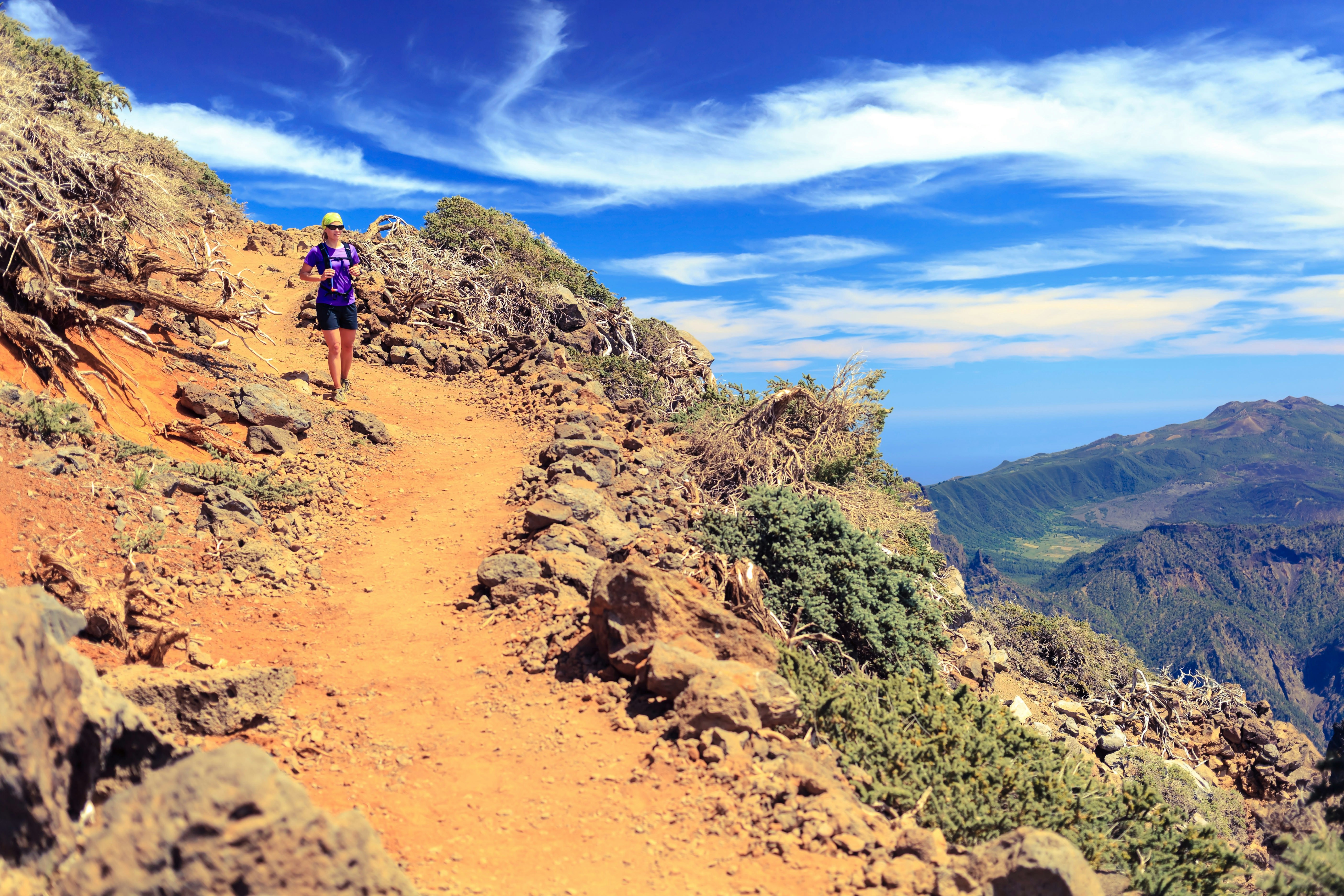
La Palma
Best island for nature and hiking
It’s impossible not to fall for gorgeously green, refreshingly under-touristed La Palma, with its hushed pine groves, steep rainforested hills and architecturally rich capital Santa Cruz de la Palma, filled with graceful 16th-century mansions. Around 528 miles (850km) of walking routes meander across the island, the most thrilling of them centered on the unmissable 18-sq-mile Parque Nacional de la Caldera de Taburiente, whose 5-mile-wide depression was created by a volcano collapsing in on itself. The 7-mile (11.4km) round-trip climb to the 6082ft-high summit of Pico de Bejenado is a view-laden showstopper of scattered pines, sharp ridges and mysterious petroglyphs.
Where to stay on La Palma
La Palma has an appealing choice of accommodations suiting all tastes but without the bloated beach resorts on other islands. If you want to live more like a local or in a rural villa with a swimming pool, choose one of the casas rurales for rent across the island. Beamed ceilings set the boutiquey scene at Santa Cruz’ intimate Hotel San Telmo.
Where to eat on La Palma
The diverse landscapes of "La Isla Bonita" are set to an equally varied and mouthwatering culinary backdrop. Santa Cruz de la Palma offers a tempting range of international and local cuisine, rounded off by a superb cafe or two. Elsewhere, the island is speckled with culinary choice, from handsomely located tapas restaurants in El Paso to select Canarian in the volcanic south or excellent seafood restaurants overlooking dazzling views of the sapphire sea. Book ahead to sample the fresh-produce cooking at locally loved restaurant Enriclai.
How to get to La Palma
La Palma’s airport keeps the island well connected to the rest of the archipelago, with several flights daily to Tenerife and Gran Canaria, and occasional direct flights to some of the other islands. There are flights to La Palma from European destinations such as London, Manchester, Frankfurt, Paris, Madrid, Amsterdam, Brussels and Barcelona. Ferries head to Tenerife, La Gomera and Gran Canaria.
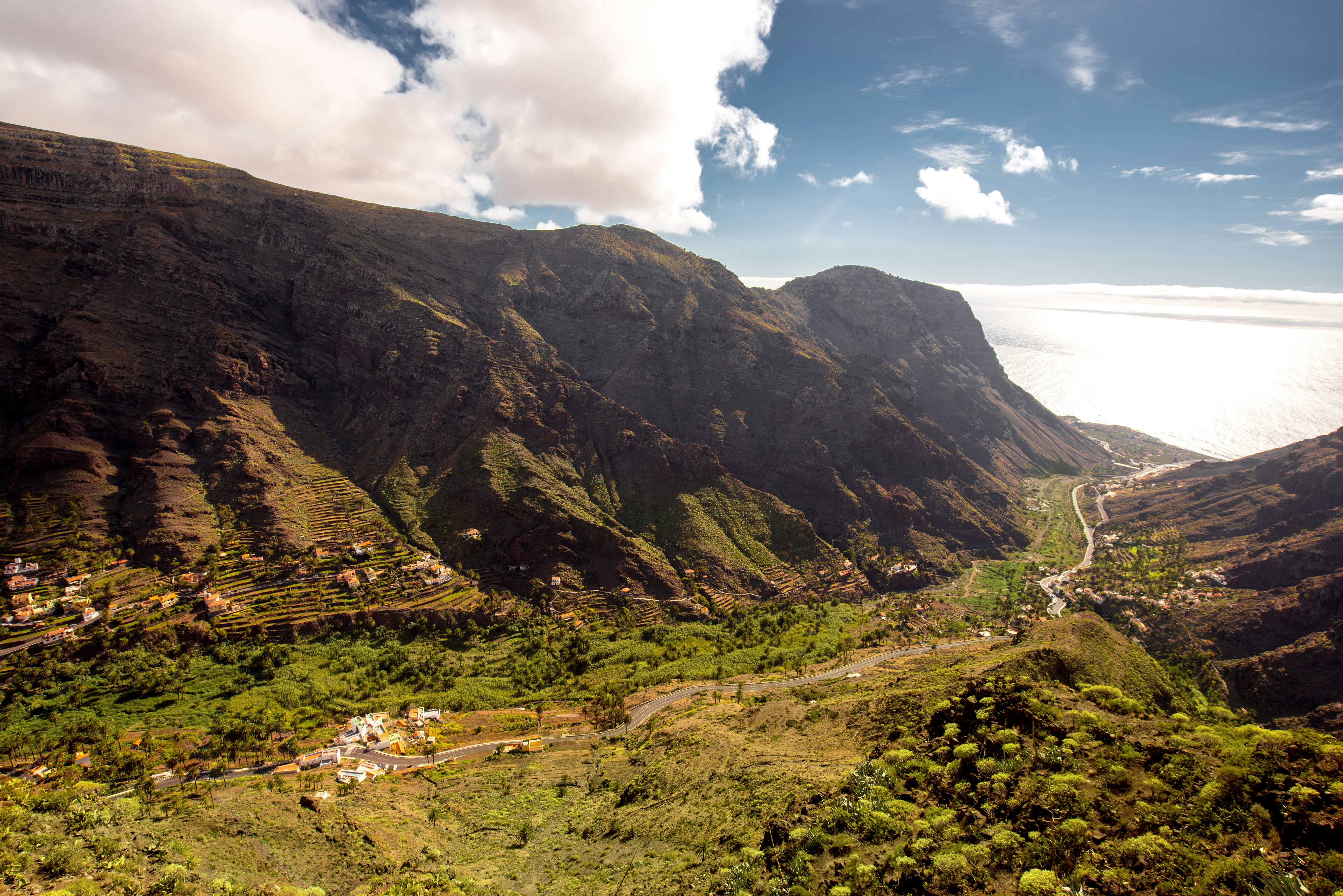
La Gomera
Best island for hiking
Cascading down thickly forested hillsides and precipitous valleys from the wind-battered 4878ft-high Alto de Garajonay, bohemian La Gomera is a hiker’s dream. The fairytale-like 15-sq-mile Parque Nacional de Garajonay at the heart of the island bursts with trails tracking through misty ancestral laurisilva forest (try the 6.5-mile downhill Alto–Hermigua hike), while elsewhere, thrilling paths cling to sheer valley walls or meander along the blackened volcanic coastline. When you’re all hiked out, stroll the pastel-painted streets of sea-hugging capital San Sebastián de la Gomera and dig into hearty local specialities like potaje de berros (watercress stew), miel de palma (palm honey) or fresh goat’s cheese.
Where to stay on La Gomera
The island has, so far, kept grand-scale tourism at bay, and most lodging is in small rural hotels, family-run pensiones, refurbished farmhouses and self-catering apartments. There are also plenty of appealing casas rurales, many of which were abandoned by emigrants and have since been refurbished for tourists. La Gomera's top hotel is the Parador de la Gomera, in the style of a 15th-century Canarian mansion.
Where to eat on La Gomera
La Gomera's cuisine is classic, simple Canarian, starring fresh seafood, meaty mains, hearty stews such as potaje de berros (watercress stew) and, of course, patatas arrugadas (wrinkly potatoes) with lashings of mojo. The island's international community has introduced a few other flavors too, especially in Valle Gran Rey, which hosts some good fusion and vegetarian restaurants alongside its traditional offerings. Don’t miss the outstanding home cooking at much-loved restaurant Casa Efigenia.
How to get to La Gomera
Aeropuerto de La Gomera has several daily flights to Tenerife. Ferries from Tenerife and La Palma arrive into San Sebastián’s busy port. The vast majority of people arrive here on day trips from Los Cristianos, Tenerife.

El Hierro
Best island for diving, hiking and escaping it all
Those who make it as far as the Canaries’ westernmost island quickly realize they’re onto something special. Ringed by glittering natural pools and impenetrable volcanic cliffs, El Hierro has been a protected Unesco Geopark since 2014, and plans are under way to transform it into the world’s first energy-self-sufficient island. Here, on what feels like the edge of the earth, quiet hiking trails such as the historic 16-mile (27km) Camino de la Virgen weave through flower-filled fields and scented pine forests. Other paths, like the spine-tingling 2.7-mile (4.4km) Camino de Jinama, traverse sheer cliff faces above lava-hewn landscapes. Meanwhile, the warm, glass-clear Atlantic waters off El Hierro’s craggy coastline unveil the finest diving in the Canaries, especially around the tranquil Mar de las Calmas near sunny La Restinga in the south.
Where to stay on El Hierro
El Hierro's accommodation scene isn't the most exciting in the Canary Islands, but you aren't here for flashy resorts. The best places to stay are charming rural hotels and private casas rurales, and there are plenty of budget-friendly self-catering apartments across the island. Stay at boho-rustic converted bodega El Sitio, which hosts yoga retreats.
Where to eat on El Hierro
Food on El Hierro might be unpretentious, but it's delicious, much of it produced on the island or off its coasts. The lack of tourist traffic ensures restaurants are catering mainly to a local clientele, which means higher standards. Dine at the elegant Restaurante Mirador de la Peña, designed by César Manrique.
How to get to El Hierro
El Hierro's tiny airport has just a few flights to Tenerife and Gran Canaria, where you can take onward transport to the rest of the archipelago. Naviera Armas has one daily sailing Sunday to Friday between El Hierro's Puerto de la Estaca and Tenerife's Los Cristianos.

La Graciosa
Best island for beaches and going back to basics
Named the eighth Canary Island in 2018, serene sand-swept La Graciosa lies just a half-hour boat ride north of Lanzarote. On this low-lying beauty of an island, wild honey-gold beaches wrap around scorched volcanic cones, and the only way to explore is on foot, by bicycle or by rented jeep. Most visitors arrive on day trips from Órzola on Lanzarote, but if you stay a few nights on La Graciosa, you’ll feel worlds away from the Canary Islands’ buzz. Hike or bike over to remote Playa de las Conchas or secluded Playa Francesa before settling in for a seafood feast in low-key "capital" Caleta de Sebo.
Where to stay on Isla Graciosa
Accommodations on Isla Graciosa are mostly in simple, comfortable pensiones or private apartments. Pensión Enriqueta has great-value, no-fuss rooms and a lively restaurant in Caleta de Sebo.
Where to eat on Isla Graciosa
You'll enjoy excellent fresh seafood at most of Caleta de Sebo's mellow restaurants, including Casa Margucha and El Veril.
How to get to Isla Graciosa
Biosfera Express and Líneas Romero run ferries between Órzola and Caleta de Sebo.
Best time to visit the Canary Islands
High Season: December to April and July to August
- Coincides with Christmas, Carnaval season and Easter.
- Accommodation prices are highest in January and February.
- Midsummer, especially August, is vacation time on the Spanish mainland, so expect more visitors.
- July and August are the hottest months of the year, but temperatures rarely climb higher than 100°F (38°C).
- Rain is possible from January to March, especially in the mountains.
Shoulder Season: May to June and September to November
- Temperatures average around 82°F (28°C), and nights are cooler.
- Fewer tourists visit in the fall overall.
- Higher altitudes, particularly in Gran Canaria, Tenerife and El Hierro, can be far cooler with some fog.
This article was originally published in August 2019.
You might also like:
Hidden Tenerife: best places to avoid the crowd
Hiking in Gran Canaria: the island’s best walks
The unsung Canary Island: exploring La Gomera

